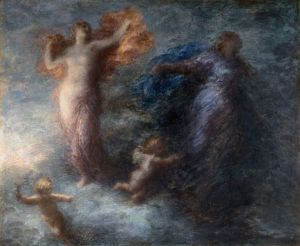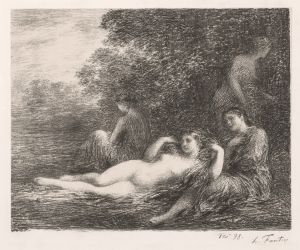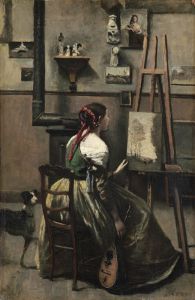
A Studio At Les Batignolles
A hand-painted replica of Henri Fantin-Latour’s masterpiece A Studio At Les Batignolles, meticulously crafted by professional artists to capture the true essence of the original. Each piece is created with museum-quality canvas and rare mineral pigments, carefully painted by experienced artists with delicate brushstrokes and rich, layered colors to perfectly recreate the texture of the original artwork. Unlike machine-printed reproductions, this hand-painted version brings the painting to life, infused with the artist’s emotions and skill in every stroke. Whether for personal collection or home decoration, it instantly elevates the artistic atmosphere of any space.
Henri Fantin-Latour's painting "A Studio at Les Batignolles" is a significant work that captures a pivotal moment in the history of French art. Painted in 1870, this group portrait is notable for its depiction of several influential figures in the Parisian art scene of the late 19th century. The painting is housed in the Musée d'Orsay in Paris, which is renowned for its collection of Impressionist and Post-Impressionist masterpieces.
Fantin-Latour, known for his still lifes and portraits, created "A Studio at Les Batignolles" to commemorate the camaraderie and shared artistic vision of a group of avant-garde artists and writers who were central to the development of Impressionism. The painting is set in the studio of the painter Édouard Manet, who is depicted at the center of the composition, working on a canvas. Manet was a pivotal figure in the transition from Realism to Impressionism, and his work was both controversial and influential during his lifetime.
Surrounding Manet are several of his contemporaries, each of whom played a significant role in the art world of the time. Among them is Pierre-Auguste Renoir, a leading Impressionist painter known for his vibrant light and saturated color. Also present is Claude Monet, whose work would come to define the Impressionist movement. Émile Zola, the famous writer and critic who supported Manet and the Impressionists, is also depicted, highlighting the interdisciplinary connections between art and literature during this period.
The painting is characterized by its realistic portrayal of the figures and the informal, almost casual arrangement of the group. This reflects the spirit of collaboration and mutual support that was essential to the Impressionist movement. The setting at Les Batignolles, a neighborhood in Paris, was known for its artistic community and was a hub for many artists who were seeking new ways to express their vision of modern life.
Fantin-Latour's work is often seen as a bridge between traditional academic painting and the emerging modernist styles. While he did not fully embrace Impressionism himself, his friendships with many of its key figures and his ability to capture their likenesses and personalities in his portraits have made his work an important historical document of the era.
"A Studio at Les Batignolles" is more than just a group portrait; it is a testament to the dynamic and transformative period in art history that it represents. The painting captures a moment of change and innovation, where artists were beginning to break away from the conventions of the past and explore new techniques and subjects. This spirit of experimentation and the breaking of boundaries is what would eventually lead to the widespread acceptance and success of the Impressionist movement.
In summary, Henri Fantin-Latour's "A Studio at Les Batignolles" is a significant work that provides insight into the artistic milieu of late 19th-century Paris. Through its depiction of key figures in the Impressionist movement, the painting serves as a historical snapshot of a time when art was undergoing profound changes, setting the stage for the modern art movements that would follow.














